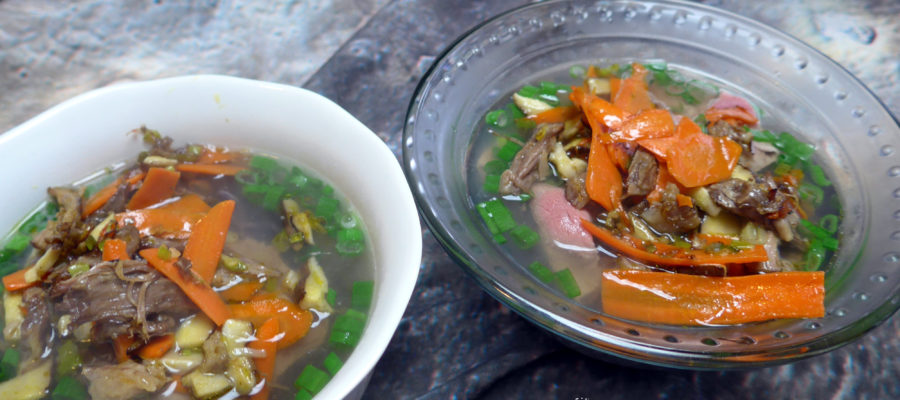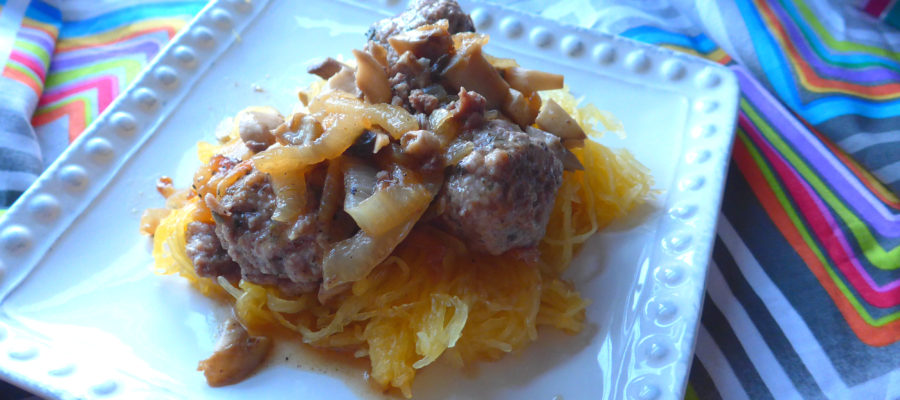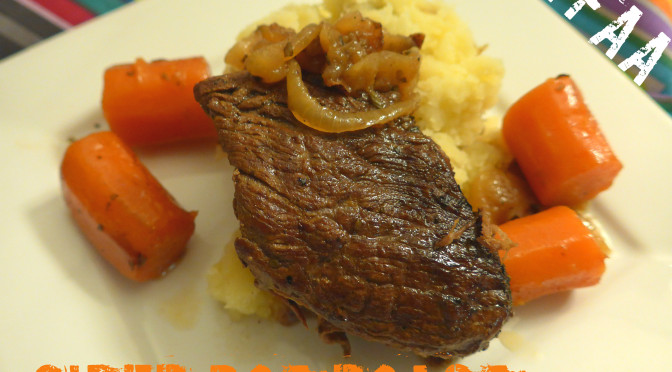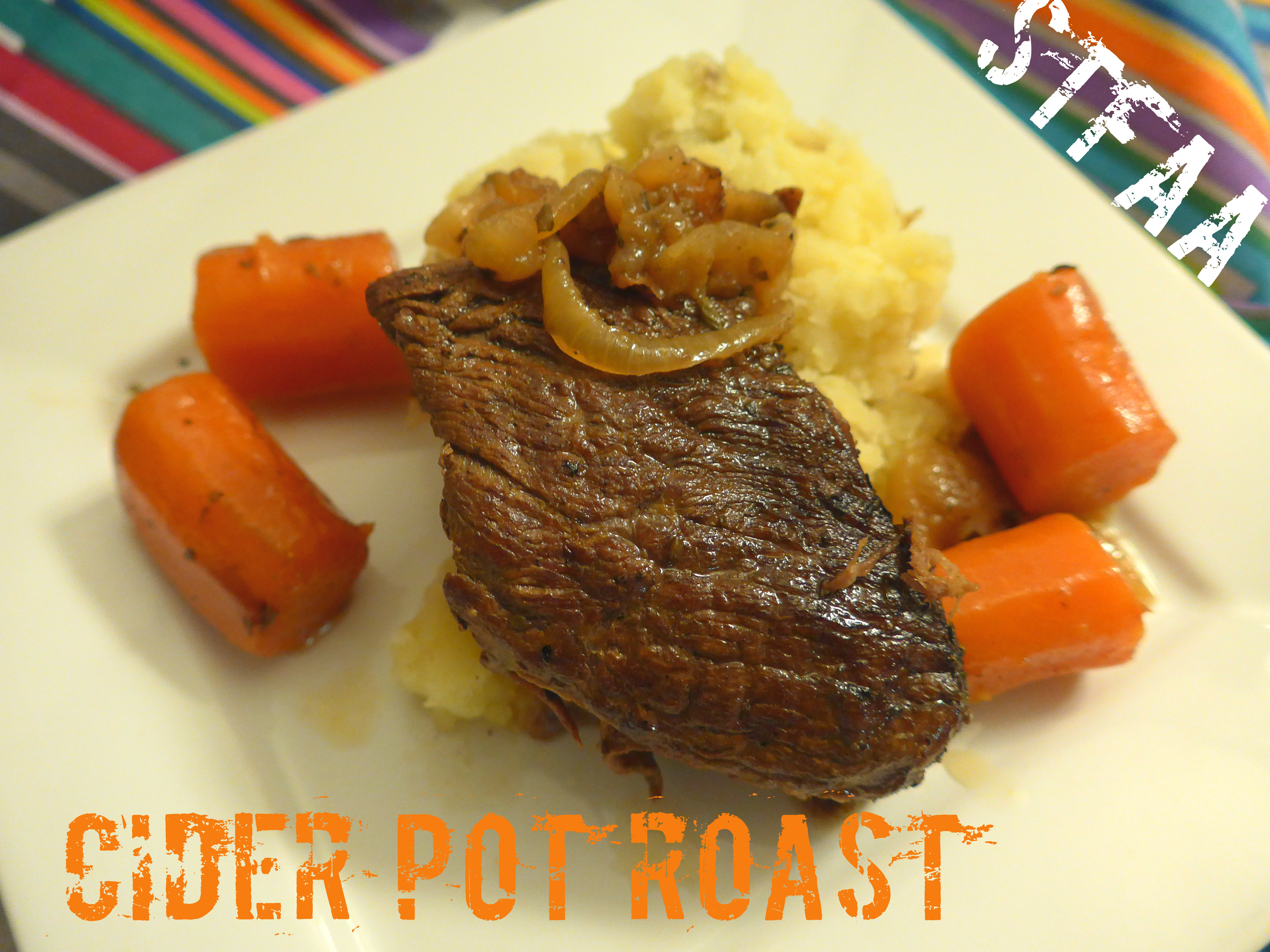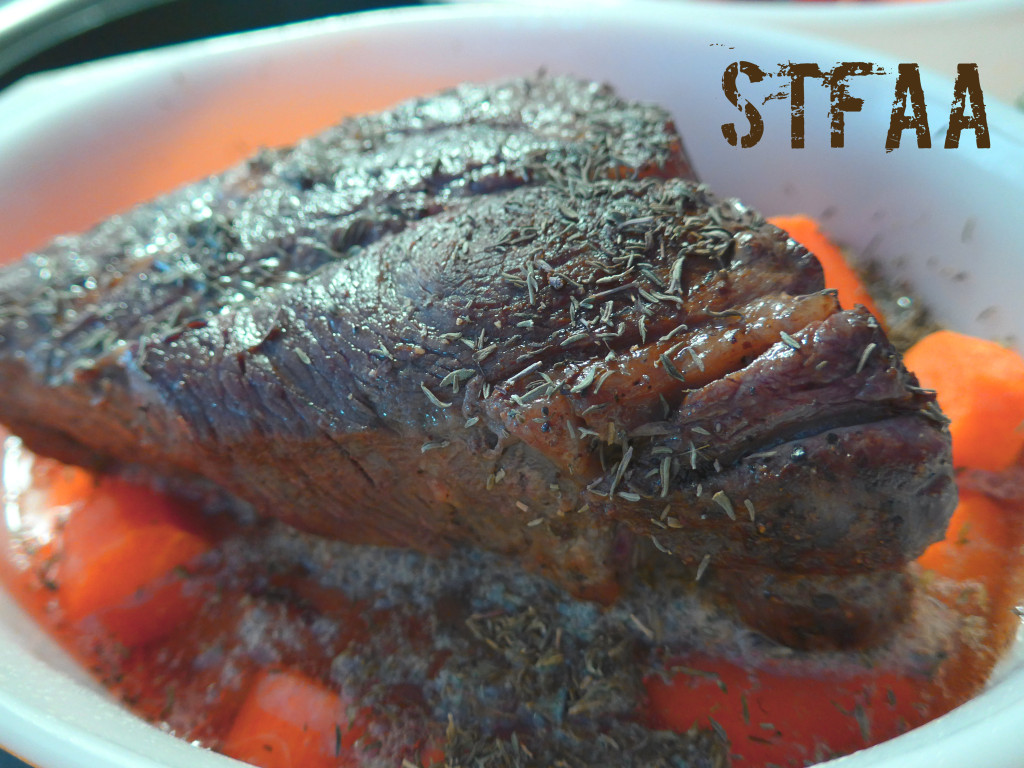It’s Elements Month! Yeah, you read right. Elements. Earth, Fire, Air, and Water. Four Mondays in November, four elements to be inspired by. Why not?
This year, we made a plan via Skype — monthly themes to inspire us. We used to get together more often to plan our editorial calendar, but now we do it via Skype, bi-coastally. It is distinctly possible that we were a little loopy by the time we got to November, so here you have ELEMENTS MONTH.
I’m kicking it off with water. After all, Cancer is a water sign, right? Plus it’s November and it snowed all weekend and we are ready for soup. I was inspired by a broth my friend Ann told me about which basically used time to extract maximum flavor from ox tails, an excellent flavoring bone that has some good tender meat on it as a bonus, and a few simple vegetables. This broth is easy, but it takes time. You should definitely make it ahead of when you want to use it. Ox tails should be available from most butchers and many grocery stores can get them or have them in the back. Ask.
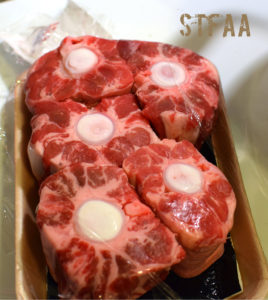
The only other “special” ingredient would be the thinly sliced beef, something I’ve gotten used to being able to get — raw meat sliced as thinly as cold cuts wasn’t something I’d seen on the east coast, but it means that the broth’s heat will cook it as part of your soup and it adds a whole other dimension to the soup. If you can’t get it, skip it, but it is worth trying to find or cut on your own.

Oh! The noodles! I’ve found gluten-free ramen noodles at a few places in Seattle, including Whole Foods, the Capitol Co-op, and a few natural food stores. The ones in this dish are forbidden rice noodles. If you can’t find gluten-free ramen, I’d suggest using rice noodles of some sort, but not gluten-free spaghetti. Most grocery stores carry pad thai rice noodles in their “Asian foods” section, and those will work okay.
This recipe is two parts — first, you make the broth, which should be done at least the day before. Then you use the broth to make soup. The broth is incredibly simple, but takes about 4 hours to make just because you simmer everything forever. The soup is actually kind of complicated, as I spent a lot of last month learning about ramen, and I’ve used that knowledge here. For traditional ramen, the broth, noodles, and soup toppings are all cooked separately. I’ve used that here to make a soup with a great variety of textures — but know that this is a soup that you might want to just take your time and enjoy making as well as eating. Don’t try it on a work night or when you’re rushed.
As I’ve said in the recipe, this soup will be made in two pots and a skillet, all at once, and I’ve tried to give you good instructions to get through that if you’re not used to 3 things going at once. The soup comes together in layers, as shown below, and that gives you a variety of textures.

Notice: Trying to access array offset on value of type bool in /home/maryzahc/public_html/adultfoodallergies.com/wp-content/plugins/wp-ultimate-recipe/helpers/models/recipe.php on line 254
- 2 lbs ox tails
- cold water to cover the ox tails by about an inch
- pinch salt
- 1 whole roma tomato washed
- 1 celery stalk
- 1 carrot
- 1 onion quartered
- 5 sprigs parsley, leaves only
- 2 cups ox tail broth fat skimmed off top
- water enough to cook your noodles
- 2 cakes gluten-free ramen noodles
- 1 Tablespoon fat (I used the fat from the broth)
- 4 scallions thinly sliced, whites and greens separated
- 2 carrots sliced as thinly as possible
- 5 shitake mushrooms chopped
- pinch salt
- 1/2 cup ox tail meat pulled from bone, excess fat and cartilege removed
- 3 slices steak thinly sliced for hot pot – optional but awesome.
- 1 lemon cut into quarters
- Put the ox tails in a large stock pot and cover with cold water by about 1 inch. Add a generous pinch of salt. Put over low heat, about 2 on my electric stove. NOTE — it will take more than half an hour for the water to simmer. Low and slow is how the flavor comes out.
- Meanwhile, prep the vegetables. Wash the tomato, carrot, and celery. Chop the carrot and celery really roughly — about 2 inch segments. Leave the tomato whole. Pull all the parsley leaves off the stalks and discard the stems. Peel and quarter the onion.
- When the water has reached a steady simmer, add all the veg. Simmer for three hours. If it gets foamy, skim it.
- Cool and remove the ox tails to store separately. Remove the vegetables and discard. Store the broth in the fridge overnight.
- You will need three cooking pots for this. One for boiling enough water to cook the noodles. One for heating your broth. One skillet for cooking your soup toppings. Figure out which burners will work best for this setup before you start, as you’ll be using all of them at once.
- Get the broth started. You want to reheat this on low until it’s about boiling, so it will take a while.
- First, do all your veggie prep. Chop the scallions and separate the green and white parts (light green goes with the white). Chop the mushrooms, slice the carrots as thinly as possible. Remove the meat from the ox tails — you will likely need to cut the fat off the outside, and watch out for the cartilage on the inside — remove that.
- Add about half of the green parts of the scallions to the broth. Measuring here is really not important. Eyeball it.
- You can either skim the fat off the soup and use that to fry up the veg, or use a fat of your choice. Put this in your skillet over medium heat.
- Next, start the noodle water. Use however much water your package directions show.
- When you skillet and fat are hot, add the onions and stir for several minutes until translucent.
- Next add the carrots and mushrooms and stir well. Add a generous pinch of salt. Wait until the mushrooms have wilted and given off their liquid before you start the noodles.
- Cook your noodles according to the package directions.
- Right before the noodles are done, add the ox tail meat to the skillet and stir well.
- Drain your noodles and set up your bowls.
- Here’s how your bowls go: Add noodles at the bottom. Add a thin layer of your raw beef. This will be cooked by the broth. Add your broth. Add the toppings from the skillet. Add a squeeze of lemon over everything. Enjoy.
